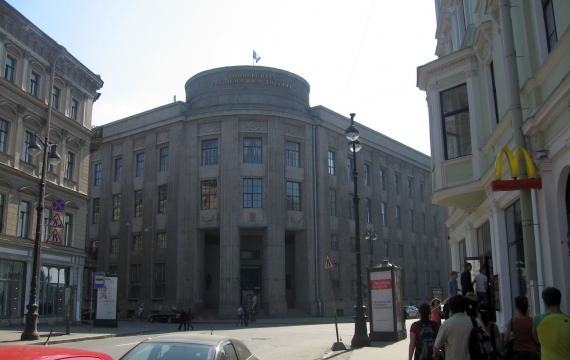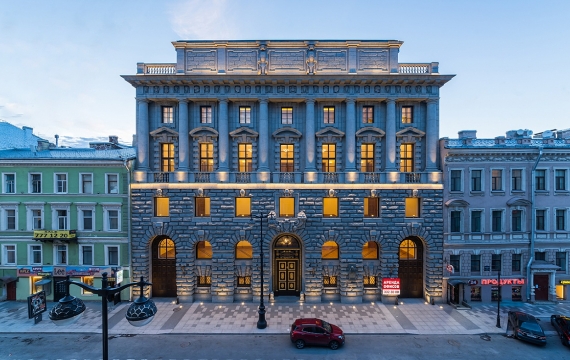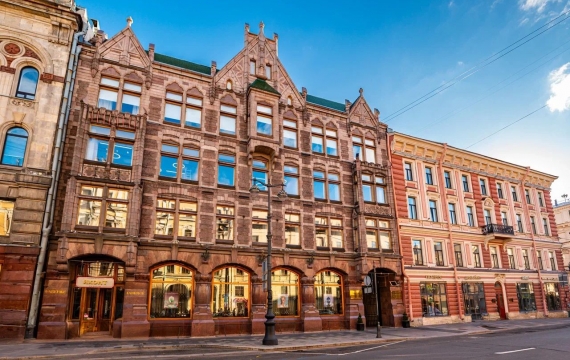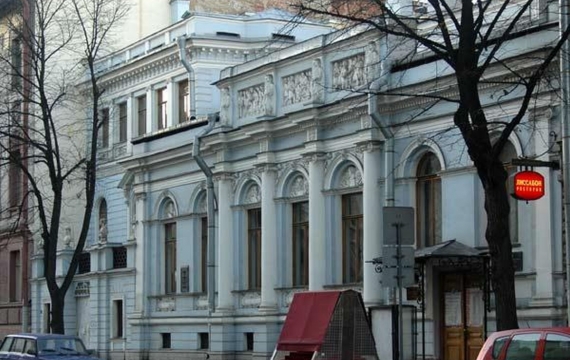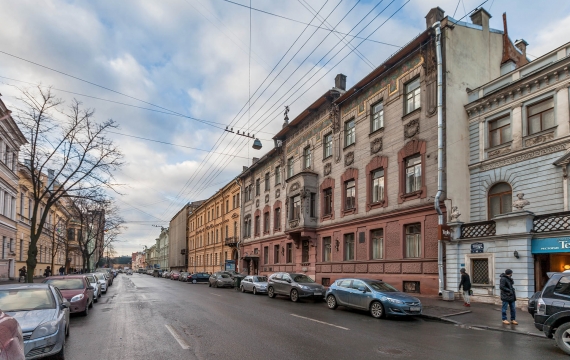Street of bankers and jewelers

Start
Арка Главного штаба
Travel time
around half an hour (calm pace)
Length
1,5 km
Finish
Pochtamtsky bridge
sightseeing routes
What is this route?
This route is good for walking at any time of the day - both during the day and white St. Petersburg night. It is also suitable for virtual trips that you can take without leaving your home.
You will get acquainted with one of the most fashionable streets of the city - Bolshaya Morskaya. Wealthy Petersburgers lived here, including the court jeweler Karl Faberge, the owner of the Ural factories Demidov and the family of the writer Vladimir Nabokov. At the beginning of the 20th century, many solid bank buildings and the first telephone station in the city were erected here. And on the route you will find two famous bridges: Blue - the widest in the city and Pochtamtsky - the only real chain bridge that has been preserved in St. Petersburg.
What can you expect?
The route starts from the famous arch of the General Staff Building. Its postcard view from the Palace Square is known all over the world, but it is no less interesting to look at the arch from the side of Bolshaya Morskaya Street. Pay attention to the large clock with the inscription “Main chamber. Exact time". They were installed in 1905 at the initiative of D.I. Mendeleevand became the first street electric clock in St. Petersburg.
Nearby is the massive building of the Azov-Don Commercial Bank, lined with gray granite. In the postwar years, the Central Call Center opened here, where in 1964 the first conversation took place between Leningrad and Moscow through automatic telephone communications.
On the left is a white-columned classic building, the house of Kotomin. Here was the confectionery of Wolf and Beranger, where Pushkin went before a duel. Other fatal events and legends are also associated with the pastry shop, which you will learn from the article about the house in our mobile guide.
On the other side of Nevsky is the mansion of police general N.I. Chicherin. After the revolution, it housed the House of Arts, one of the centers of the literary and artistic life of Petrograd. Alexander Green wrote “Scarlet Sails” here.
You crossed Nevsky and continue on the Bolshaya Morskaya. Ahead, on the corner of Brick Lane, stands out the gray constructivist building of the University of Technology and Design. In 1915, construction of an Art Nouveau house for the Russian Bank began on this site, but the revolution stopped construction, and only in 1929 the house was transferred to its current owner.
On the other side is an impressive neo-Renaissance building, erected in 1914 specifically for the Russian Commercial and Industrial Bank. Today it is occupied by the Senator business center, where you can see the preserved rich interiors of polished stone.
The building of the former Central Telephone Exchange, the first in St. Petersburg, belongs to the same business center. And in the XIX century, in its place stood a house with a 35-meter tower, which housed the police unit and the fire brigade of the Admiralty Unit.
The house standing next to it stands out even against the background of other bright buildings of the Bolshaya Morskaya. The heavy granite half-columns of the arcade of the first floor emphasize the Gothic lightness of the upward-looking facade, crowned with triangular spitzes. This is the house of Carl Faberge. It was here that there was an art studio, workshops and a shop where the famous Faberge jewelry was created and sold.
Without reaching St. Isaac's Square the apartment building of the insurance company Russia is situated. On its facade there are majolica, created according to the sketches of Nicholas Roerich. The building houses the Rosfoto exhibition center and the museum of Russian politician Galina Starovoitova.
The next building, with the main facade facing the square, is the Astoria Hotel, one of the five best five-star hotels in the world
In front of you is St. Isaac's Square. Passing it, on your left hand you see St. Isaac's Cathedral. This is a museum, but since 1991 services have been held here. During the museum’s opening hours, and during the white nights - until the morning, you can climb the colonnade of the cathedral and admire the panorama of the city from a height of 43 meters.
On the right is a monument to Nicholas I. “It contains a lot from the ensign and a little from Peter the Great,” - this is how Pushkin spoke about the emperor in his diary for 1834. 25 years later, a monument was erected on St. Isaac's Square - like the Bronze Horseman, it “jumps” towards the Neva. Apparitive Petersburgers, comparing the two monarchs, composed a riddle: "The clever fool is catching up, but Isaac the one interferes."
On both sides of the square, two identical buildings of the Institute of Plant Production in the name of N.I. Vavilov are situated. Under the leadership of this outstanding genetic scientist, the world's largest collection of seeds of cultivated plants was created here. In 1940, academician Vavilov was repressed and died in prison. In the days of the blockade, his colleagues, many at the cost of starvation, managed to save the entire selection fund.
St. Isaac's Square is also interesting because most of it stands on the bridge. The blue bridge across the Moika River is the widest in St. Petersburg. Its width is 97.3 meters and its area is 2294 square meters.
On the lower side of the bridge, on the right bank of the Moyka River, in 1971, a water meter-pole was installed, marking the water level during the floods of 1824, 1903, 1924, 1955 and 1967.
Further along Bolshaya Morskaya Street, two lavishly decorated buildings stand nearby. Both houses - No. 43 and 45 - were erected in 1835-1840 according to the project of Auguste Monferrand for the owner of the Ural plants Pavel Nikolaevich Demidov. The Italian embassy was later located in the first of the two buildings, Princess Gagarin lived in the second, and now the House of Composers is located there.
In the neighboring house No. 47 the great Russian writer Vladimir Nabokov was born and raised. Now his museum is located here.
On the other side of the street is the Architect's House, the former mansion of the senator, chairman of the Russian Historical Society - A.A. Polovtsov. The house has preserved magnificent ceremonial interiors.
At the corner with Pochtamtsky Lane, the building of the communication center workers breaks into the atmosphere of wealth and prosperity on Bolshaya Morskaya Street. In the 19th century it was a church built according to the design of G.A. Bosse for the German Reformed community - an amazingly beautiful red brick temple with a high bunk bell tower and stained glass windows. In 1929 the church was closed and by 1940 it was rebuilt in the style of Soviet constructivism.
The Pochtamtsky bridge across the Moika River is the only suspension bridge in our city of St. Petersburg where the original structure created in the first quarter of the 19th century was preserved (or rather restored). This is the final point of your journey.





